The world of e-commerce has witnessed remarkable growth and innovation, providing businesses with endless opportunities to reach customers globally. Two prominent contenders in this arena are headless commerce and traditional commerce. In this article, we’ll delve into the key characteristics, advantages, and challenges of both approaches, ultimately determining who comes out on top in the battle between headless commerce vs traditional commerce.
What Is Traditional Commerce?
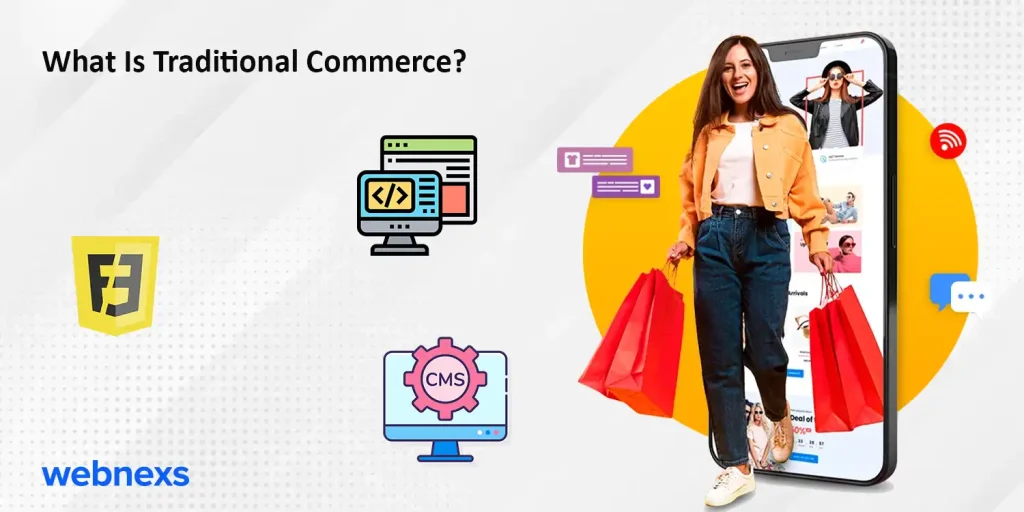
Traditional commerce, also known as monolithic or full-stack commerce, refers to the conventional method of building an e-commerce website where the front-end and back-end are tightly integrated. It involves using a single platform or CMS that handles both the presentation layer and the underlying business logic.
3 Key Features of Traditional Commerce
- All-in-One Solution: Traditional commerce platforms typically provide an all-in-one solution, encompassing features such as product catalog management, order processing, payment gateways, and customer management within a single system.
- Ease of Use: These platforms often offer user-friendly interfaces, making it relatively easy for non-technical users to manage and operate their online stores.
- Pre-built Templates: Traditional commerce platforms usually provide a range of pre-designed templates and themes, allowing businesses to quickly set up their online presence without extensive customization.
Advantages of Traditional Commerce
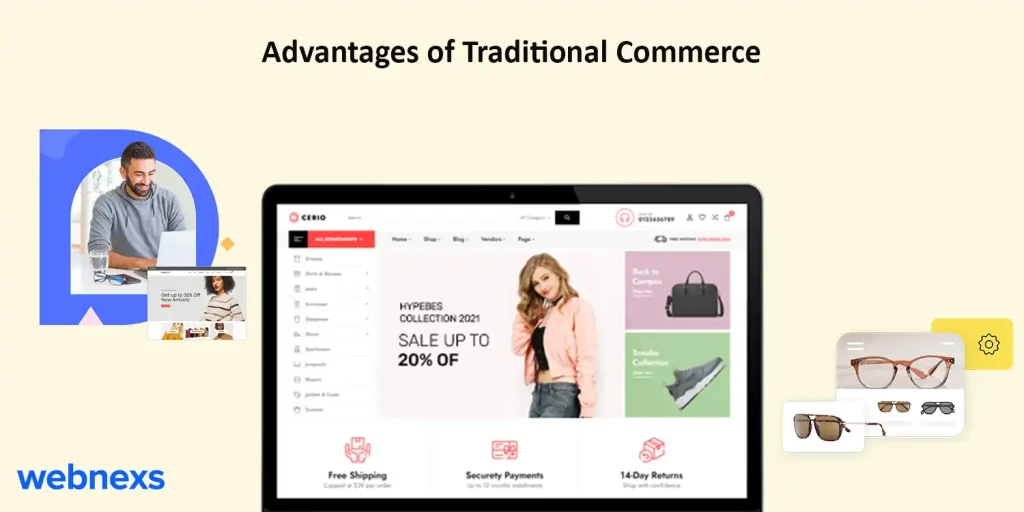
- Simplicity and Familiarity: Traditional commerce follows a familiar approach, similar to brick-and-mortar retail. Business owners and developers are already acquainted with its workflows and processes, making it easier to adopt and navigate.
- Integrated Functionality: With an all-in-one platform, traditional commerce provides integrated features, minimizing the need for additional integrations or third-party solutions.
- Cost-Effective for Small Businesses: Traditional commerce platforms often offer affordable pricing plans, making them accessible to small businesses with limited budgets.
Challenges of Traditional Commerce
- Limited Flexibility: The tightly integrated nature of traditional commerce platforms can limit customization options and hinder flexibility in design and functionality.
- Scalability Concerns: As the business grows, traditional commerce platforms may struggle to handle increasing traffic and complex business requirements, potentially leading to performance issues.
- Dependency on Platform Provider: Businesses using traditional commerce platforms rely heavily on the platform provider for updates, bug fixes, and security patches, which may lead to potential delays and limitations.
What Is Headless Commerce?
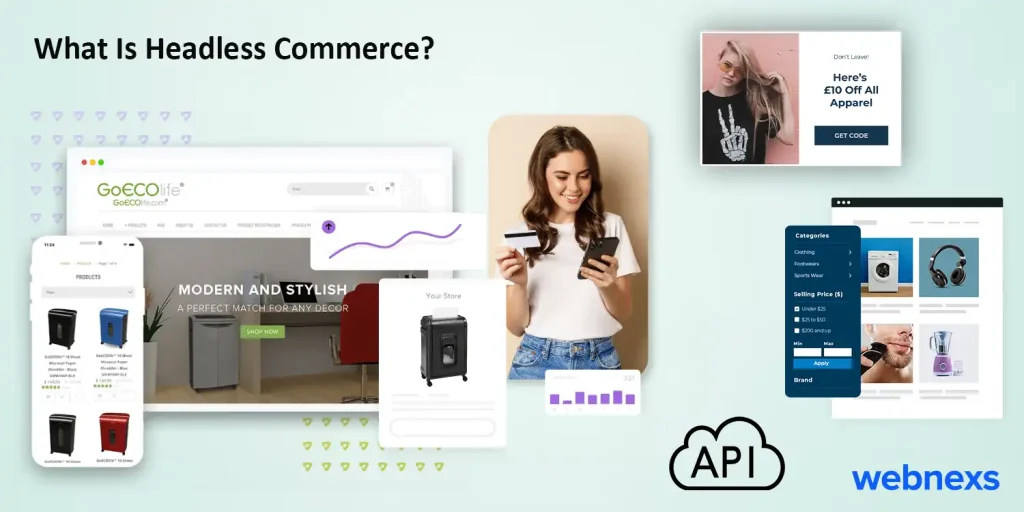
Headless commerce, on the other hand, represents a modern approach that decouples the front-end from the back-end. It allows businesses to use separate systems or APIs for the front-end and back-end, providing greater flexibility and agility in building and managing online stores.
3 Key Features of Headless Commerce
- API-Driven Architecture: Headless commerce relies on APIs to connect the front-end and back-end systems, enabling seamless communication and data exchange between the two.
- Front-End Freedom: With headless commerce, businesses have the freedom to choose any front-end technology or framework, allowing for highly customizable and tailored user experiences.
- Microservices Approach: Headless commerce allows businesses to adopt a microservices architecture, where different services or functionalities can be developed and scaled independently.
Advantages of Headless Commerce
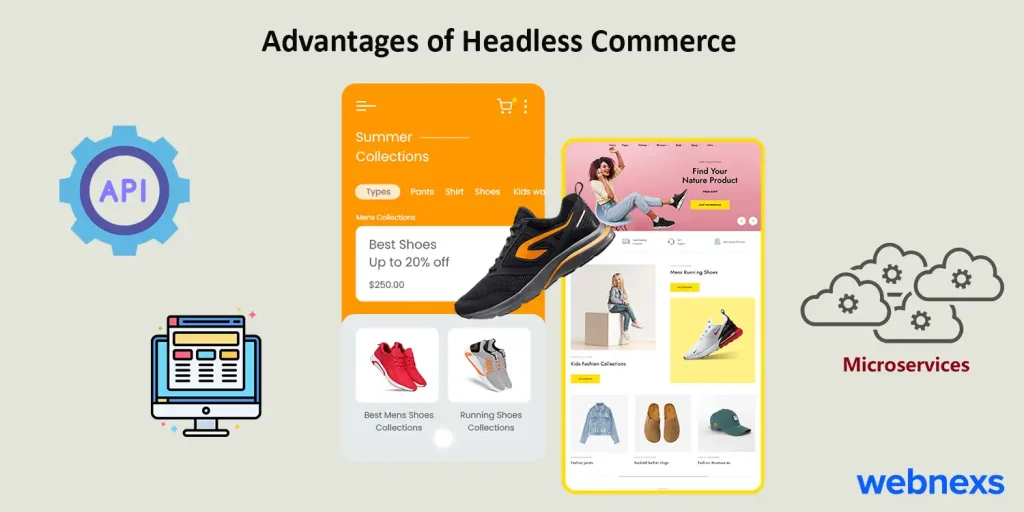
- Flexibility and Customization: Headless commerce provides unparalleled flexibility, allowing businesses to create unique and immersive user experiences by leveraging cutting-edge front-end technologies.
- Scalability and Performance: By decoupling the front-end and back-end, headless commerce enables businesses to scale each component independently, ensuring optimal performance even under high traffic loads.
- Omnichannel Capabilities: Headless commerce empowers businesses to deliver consistent experiences across various channels, including web, mobile, IoT devices, and voice assistants.
Challenges of Headless Commerce
- Complexity in Implementation: Implementing headless commerce requires technical expertise and development resources to build and integrate front-end and back-end systems.
- Additional Integration Efforts: As headless commerce involves using separate systems or APIs, businesses may need to invest additional effort in integrating various services, such as payments, inventory management, and order processing.
- Higher Upfront Costs: Compared to traditional commerce, headless commerce may involve higher upfront costs due to the need for separate front-end and back-end development and infrastructure.
Read More: Headless Ecommerce CMS Development
The Battle Differences: Headless Commerce Vs Traditional Commerce
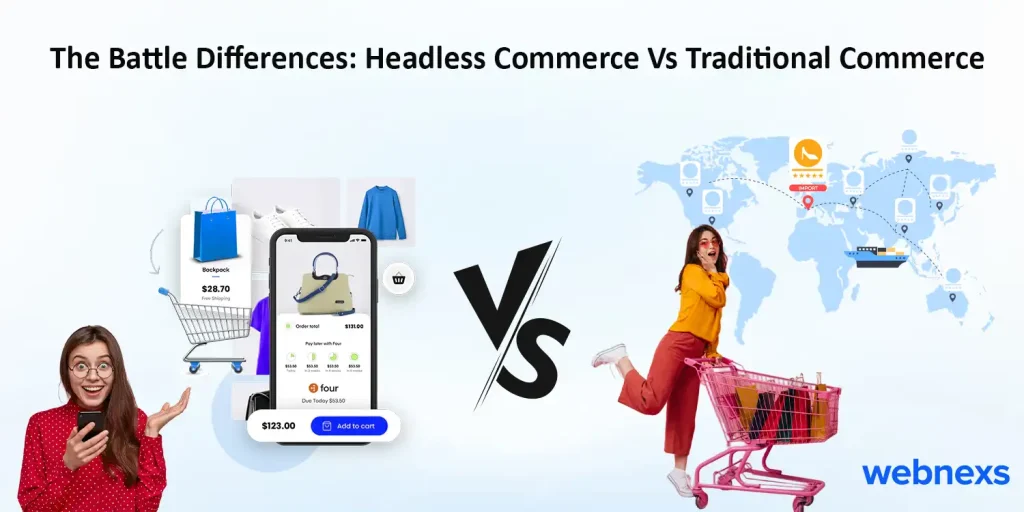
In the battle between headless commerce and traditional commerce differences, there is no clear winner that suits every business’s needs. The choice depends on various factors such as business goals, scalability requirements, customization needs, and available resources. While traditional commerce offers simplicity, familiarity, and cost-effectiveness, headless commerce provides unmatched flexibility, scalability, and the potential for delivering cutting-edge user experiences.
Ultimately, the decision between headless commerce and traditional commerce boils down to the unique requirements and vision of each business. Some businesses may prefer the simplicity and ease of use offered by traditional commerce, while others may prioritize customization and future scalability provided by headless commerce. Careful consideration of these factors will help businesses make informed decisions and pave the way for a successful e-commerce venture.
Headless Commerce And Traditional Commerce Differences Conclusion
In the ever-evolving world of ecommerce, both headless commerce and traditional commerce have their strengths and weaknesses. Traditional commerce offers simplicity and familiarity, while headless commerce unleashes flexibility and customization. The battle between headless commerce vs traditional commerce depends on the unique needs of each business, its goals, and its scalability requirements. Regardless of the chosen approach, embracing ecommerce and staying attuned to evolving trends is crucial for businesses to thrive in the digital world.

Headless Commerce And Traditional Commerce FAQs
1. What is headless commerce and traditional commerce differences?
Headless commerce is a decoupled architecture where the front-end and back-end of an online store are separated, allowing flexibility and easier integration with various platforms compared to traditional commerce.
2. What are the best practices for transitioning from traditional commerce to headless commerce?
Evaluate your existing commerce infrastructure, select a headless commerce platform, decouple frontend and backend, use APIs for seamless integration, and optimize for scalability and flexibility.
3. How does headless commerce enable businesses to innovate and stay competitive?
Headless commerce allows businesses to decouple their frontend and backend, enabling faster innovation, flexibility, and seamless integration with new technologies to stay competitive.
4. What are the current trends in headless commerce, and how are businesses adapting to them?
Some current trends in headless commerce include API-driven architectures, microservices, and personalized experiences. Businesses are adopting these trends to enhance agility, scalability, and customer engagement.
5. What are the key benefits of headless commerce compared to traditional commerce?
Key benefits of headless commerce include flexibility to deliver consistent customer experiences across multiple touchpoints, faster innovation, scalability, and seamless integration with third-party systems.




